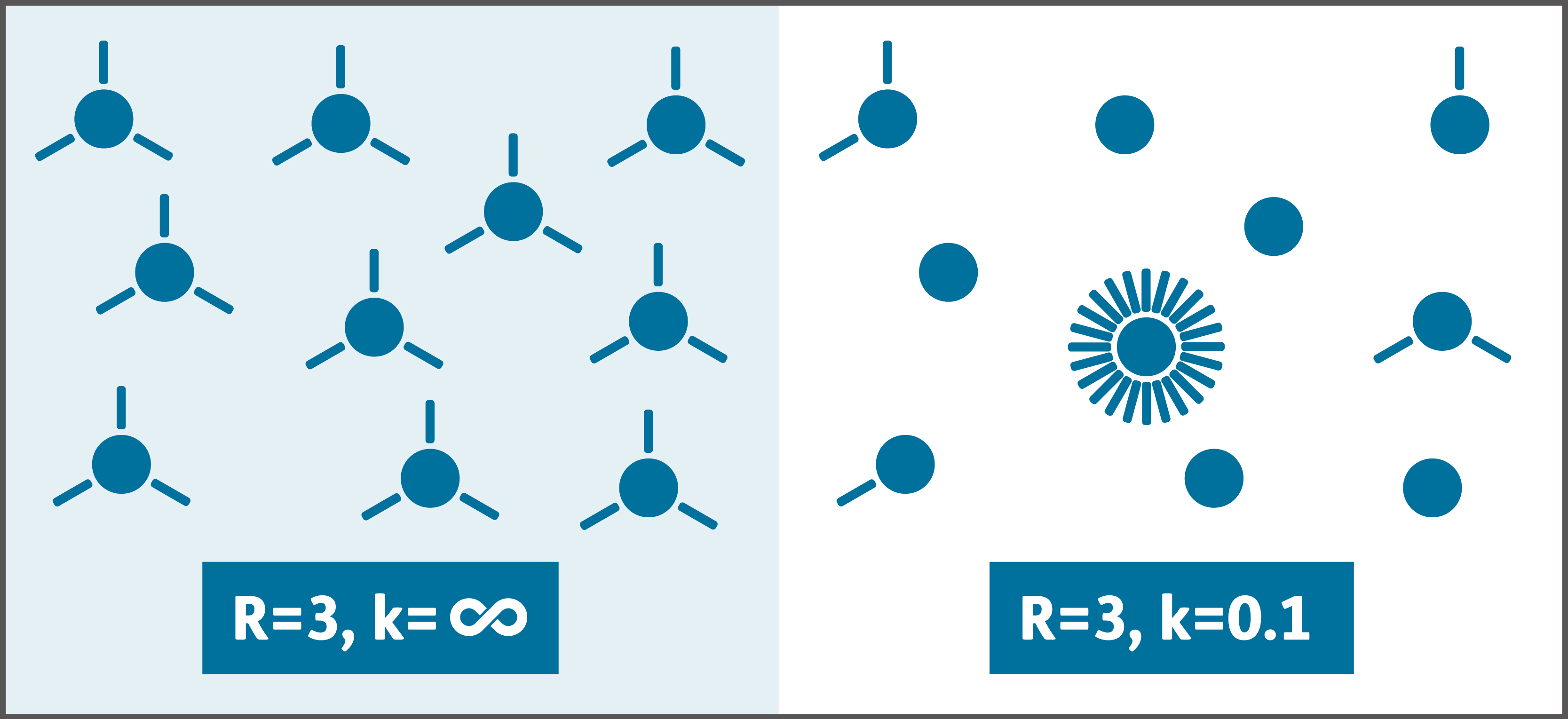In previous articles, Dr Elizabeth Webb has looked at R – the reproduction number – for coronavirus. This tells us how many people each person with coronavirus is likely to pass the virus on to, on average. However, R is only part of the story. As it is only the average, it hides a lot of variation in how many people each person with coronavirus passes it on to, as Dr Webb explains.

What is R?
During lockdown Dr Webb explained the science behind R, what it means for the coronavirus outbreak, and its role in the actions of the Government.
The k value
The variation in the number of people a disease is passed on to by each person who has it is called k – ‘the dispersion parameter’. k can have any value between 0 and infinity. When k equals infinity every person who has a disease passes it on to the same number of people, also equal to the R value. The closer k is to 0, the more variation there is in the number of people those with the disease pass it on to – some people are super-spreaders who pass on coronavirus to lots of other people, while others are ‘dead ends’ for the disease.
Although precise measurement of k is difficult, current estimates for the k for coronavirus suggest it may be as low as 0.1. If k is 0.1 this suggests that about 80% of new cases of coronavirus might come from about 10% of people who have it. The diagram [below] shows an example. On the left we see what would happen if there was no variation in the number of people everyone with coronavirus passed it on to, if k equalled infinity. On the right is an example of what happens in reality – some people with coronavirus don’t pass it on to anyone, and a small number pass it on to lots of people.

k and control of the epidemic
A low value of k, as there is with coronavirus, can be seen as an advantage when trying to control an epidemic. As a small number of people – the super-spreaders – cause most of the new cases, the epidemic can be controlled by focussing on reducing the chances for them to transmit the virus. But what makes a super-spreader?
Becoming a super-spreader depends on being highly infectious, but people also become super-spreaders because of what they do. As we all learn more about coronavirus, we have learned that there are certain activities we should avoid if we want to avoid exposure to the virus. These include spending long periods of time in close contact with other people, indoors in poorly ventilated areas, and being among other people who are singing or shouting. These activities can easily become super-spreader events, if someone in the group has coronavirus.
The challenge with coronavirus is that people who have it are infectious before they have symptoms of the disease, when they are still asymptomatic. People can therefore become a super-spreader before they even know they are unwell. This means that, when there are a lot of people in a community who have coronavirus, we all need to avoid the sorts of activities which could lead to super-spreading, not just those who feel unwell.

More articles by Dr Webb
Dr Elizabeth Webb is a Senior Research Manager at Age UK. She has an MSc in Epidemiology from the London School of Hygiene and Tropical Medicine and a PhD in Social Epidemiology from University College London.
- The science informing coronavirus guidelines for older people
- Predicting the progress of the coronavirus epidemic
- Why are older people more at risk from coronavirus?
- How can we recognise when we have coronavirus?
- How close are we to a vaccine?
- How do we keep R below 1?
- Coronavirus risk for older people: the updated picture
- Is there an increased risk of coronavirus for BAME older people?
- What is k and who are the super-spreaders?


